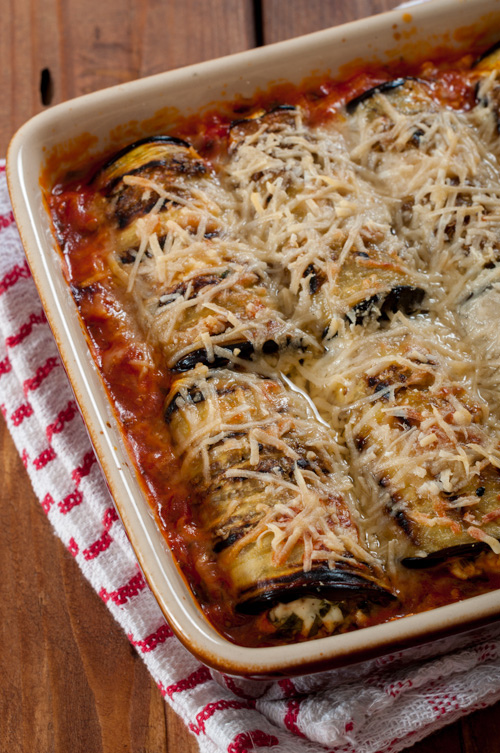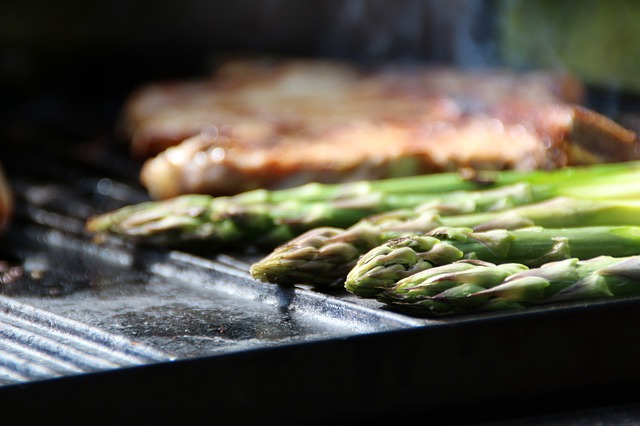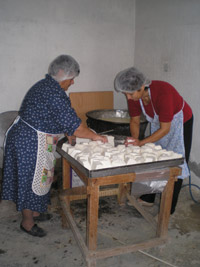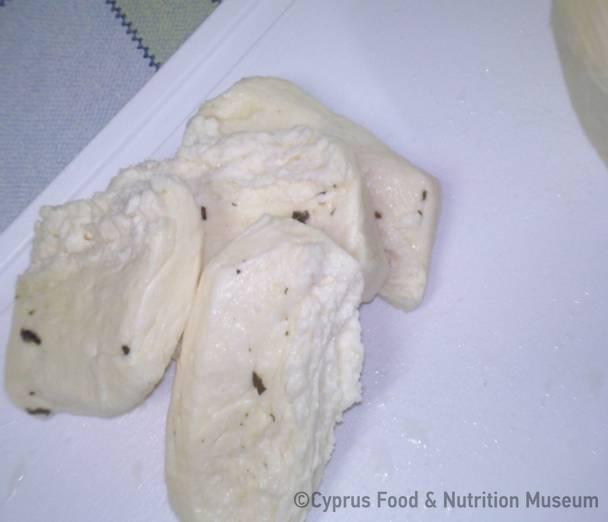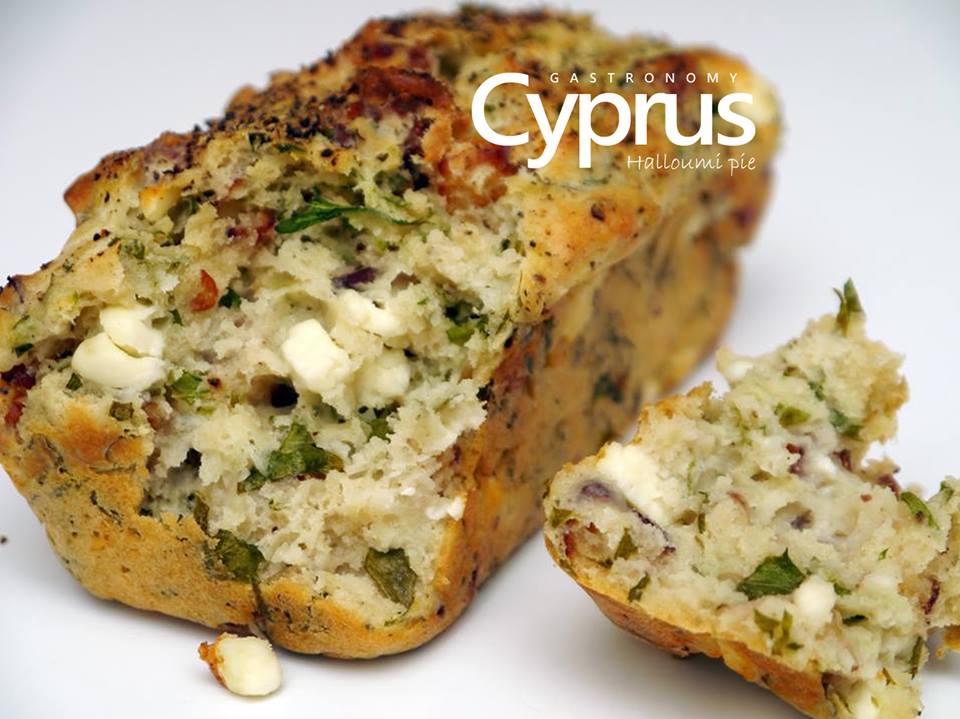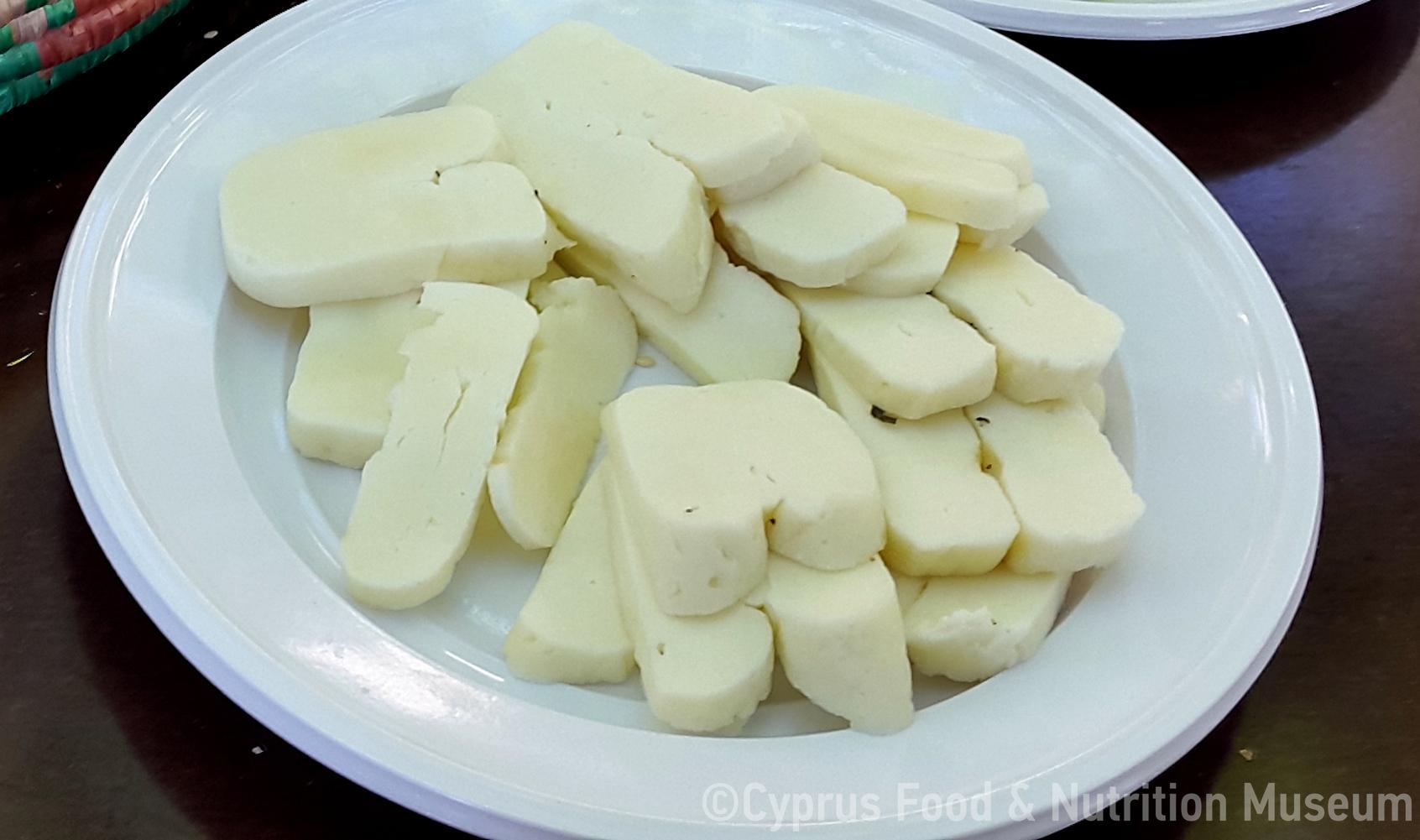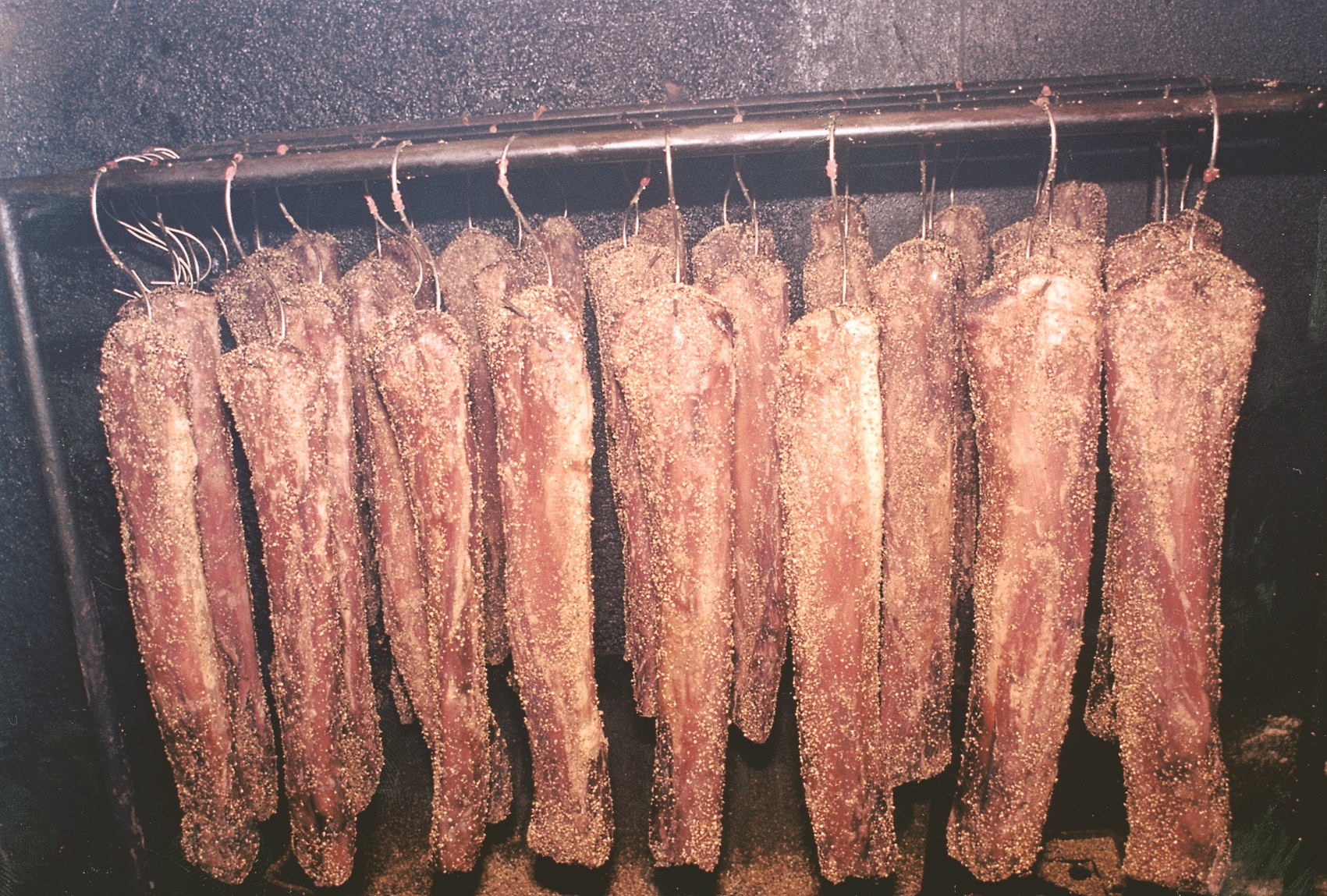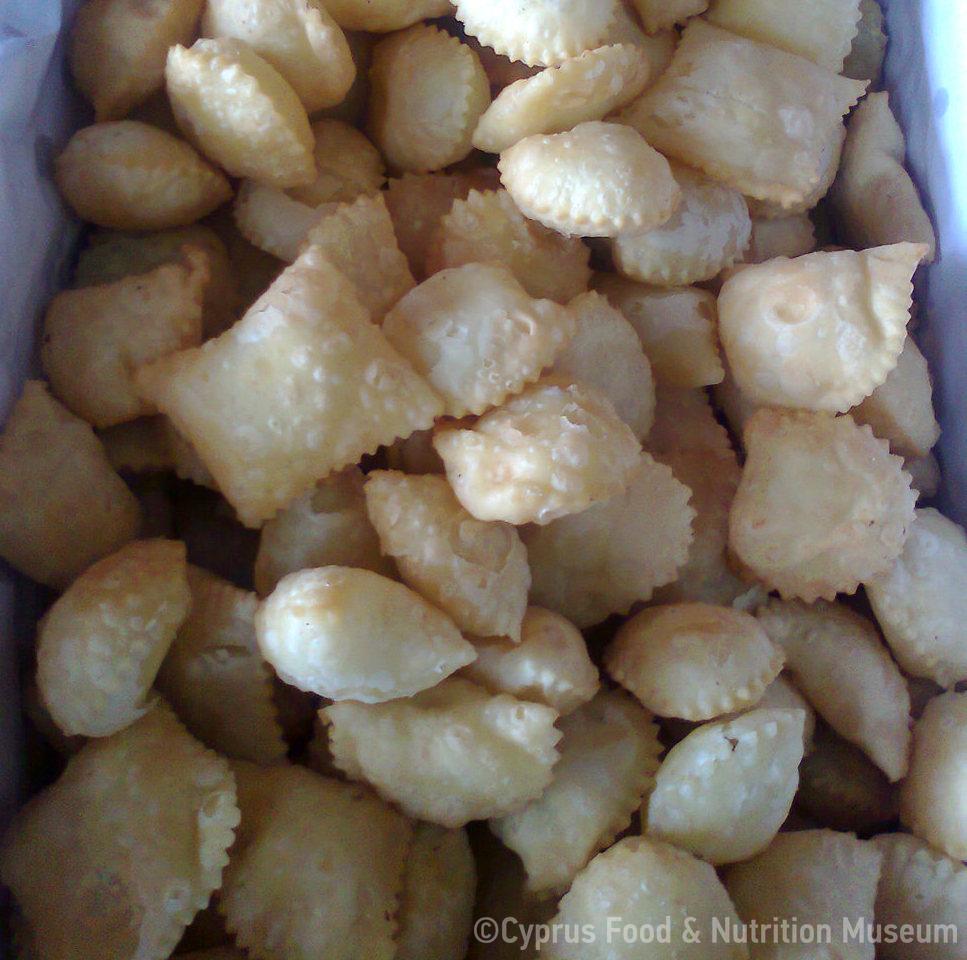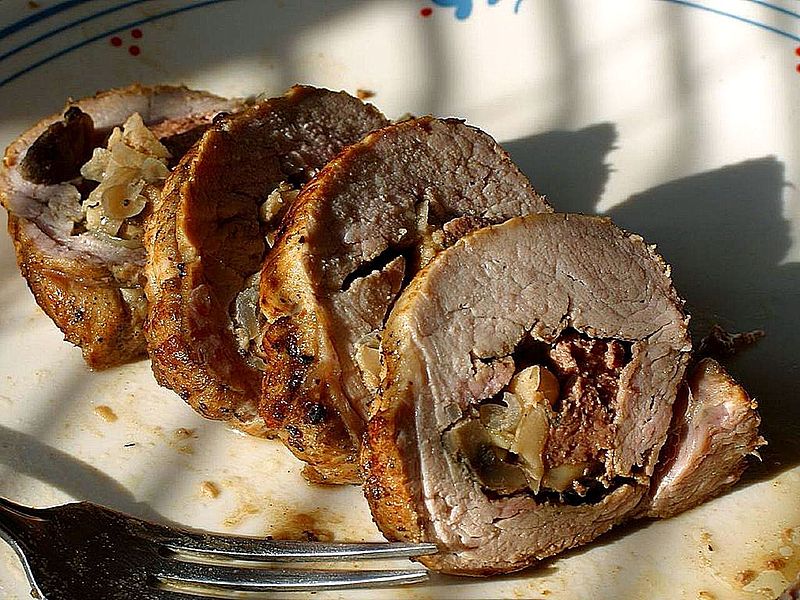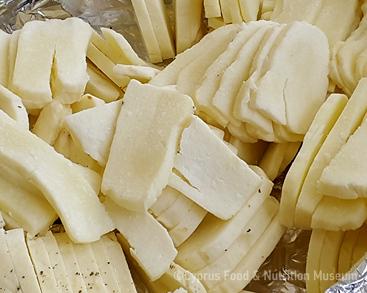Halloumi production has been known in Cyprus since ancient times. A plethora of Cyprus-related written sources refer to halloumi, most evidently the manuscript of Duke Leonardo Dona, dated to 1556, that makes reference to “calumi”. Halloumi is registered as a PDO since 13/04/2021.
Name - Origin
Halloumi (fresh or mature) is a cheese made from sheep or goat milk or a mixture of the two with or without cow milk.
Today, several families in Cyprus have the surname "Halloumas", "Halloumakis", "Halloumis".
Milk is heated at a curdling temperature or pasteurised beforehand to a temperature above 65°C and cooled. After the milk has coagulated, the curd ('drosinon') is cut and reheated at 40 °C while stirring and halloumi is formed. Halloumi is then cut into pieces and placed in talaria (a type of small woven baskets) or in cheesecloths and pressed to drain. The liquid is called noros (whey). After removing the 'anari' part , the curd pieces are placed in noros and heated at a temperature above 90 °C for at least 30 minutes. Then, halloumi will float to the surface of noros. Each piece of halloumi is removed from noros and seasoned with salt and spearmint. Halloumi is now ready for consumption. and it is ready for consumption or it can be placed in the leftover noro to be stored and preserved. If halloumi pieces are left in noros for 1-3 days, they can then be packaged (vacuum sealed). For the production of ripe halloumi, the pieces are left in noros for at least 40 days at 15-20 °C.
Functional and symbolic role
Halloumi does not melt when heated at high temperatures, so it is consumed both as is and when fried, grilled or combined in a dish. While halloumi is consumed in a traditional Cypriot breakfast with fresh bread, tomatoes and cucumbers, it also combines well with watermelon, during the Summer months, served as a snack of light meal. Halloumi is also grated over pasta and ravioles, combined in bescamel sauce in pastitsio or moussaka or cut in pieces in trahanas soup. It is the main ingredient in various baked goods, e.g. halloumopitta (halloumi pies), bourekia and others.
On various festive occasions, treats such as bourekia, halloumopittes have a halloumi filling and soulva meals are accompanied with halloumi on the charcoal. Note: Stalo Lazarou.
Additional information and bibliography
Halloumi production has been known in Cyprus since ancient times. A plethora of Cyprus-related written sources refer to halloumi, most evidently the manuscript of Duke Leonardo Dona, dated to 1556, that makes reference to “calumi”. Later references to halloumi include those of Archimandrite Kyprianos in 1788 AD. The importance of Halloumi in the life of the inhabitants of Cyprus is evident both through art and through the prominent position it held in agricultural exhibitions (Lysi, 1915/1938). Halloumi is registered as a PDO since 13/04/2021.
Ministry of Agriculture, Natural Resources and Environment, Department of Agriculture (2022).Gastronomical Map of Cyprus, Nicosia, Press and Information Office, 40/2022-5.000.
Stalo Lazarou
